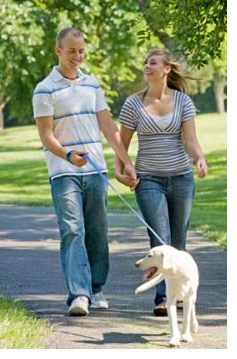
'Alternative transportation'
Walking, bicycling
carries personal, community advantages
Brent Jennings
Highway Safety Manager
Bicycling and walking are often called ‘alternative transportation’ modes. In fact, they are our primary ways of moving from place to place.
All of us learned to walk and many of us learned to ride a bicycle long before we slid into the driver’s seat of a car. Sadly, for more than 60 years, we’ve focused our collective attention – and most of our transportation funding – on the automobile, relegating the less expensive and healthier modes of walking and bicycling to ‘alternative’ status, only as important as the latest fad in fashion or lifestyle.
 Yet, walking and bicycling provides personal and community benefits:
Yet, walking and bicycling provides personal and community benefits:
To individuals
Health
According to the President’s Council on Physical Fitness and Sports, approximately 70 percent of US adults are sedentary. This includes 28% who engage in no leisure-time physical activities and 42 percent who undertake less than 30 minutes of physical activity (such as walking) each day. Recreational bike riding is a safe, low-impact, aerobic activity for Americans of all ages. A 150-pound cyclist burns 410 calories while pedaling 12 miles in an hour; a 200-pound cyclist burns 546 calories while going 12 miles per hour.Environmental
Motor vehicle emissions represent 31 percent of total carbon dioxide, 81 percent of carbon monoxide, and 49 percent of nitrogen oxides released in the U.S. (The Green Commuter, a publication of the Clean Air Council).Lower transportation costs
The cost of operating a sedan for one year is approximately $7,800 (AAA, Your Driving Costs). Owning a car accounts for more than 18 percent of a typical household’s income. (AAA, US Census surveys)The cost of operating a bicycle for a year is only $120 (League of American Bicyclists).
To our communities
Safer streets
More bicyclists on the streets mean safer streets for all roadway users. As more people ride, bicyclists gain experience; drivers become more aware of bicyclists and community support for bicycle improvements grow
Public health
According to the CDC, 61 percent of adults in the U.S. are overweight or obese; 13 percent of kids aged 6 to 11 and 14 percent of kids 12 to 19 are overweight. Obesity is second behind tobacco in U.S. health risk factors, contributing to 300,000 deaths a year. In 2002, obesity-related medical care spending accounted for 11.6 percent of all private health care spending, compared to just 2 percent in 1987, concludes Health Affairs. Bicycling and walking help Americans improve their physical fitness and lose weight. (Sources: Exercise and Your Heart -- A Guide to Physical Activity. National Heart, Lung, and Blood Institute / American Heart Association,Improved air quality
Motor vehicle emissions represent 31 percent of total carbon dioxide, 81 percent of carbon monoxide, and 49 percent of nitrogen oxides released in the U.S. (The Green Commuter, a publication of the Clean Air Council). A short, four-mile round trip by bicycle keeps about 15 pounds of pollutants out of the air we breathe.Bicycling allows more people access to their communities.
Safe Routes to School programs enable children to safely walk and bicycle to school, rather than rely on being driven or being bused. Adults find bicycling less costly than driving a car, especially for short trips in neighborhoods with convenient and safe access to transit and services.
Published 9-27-13